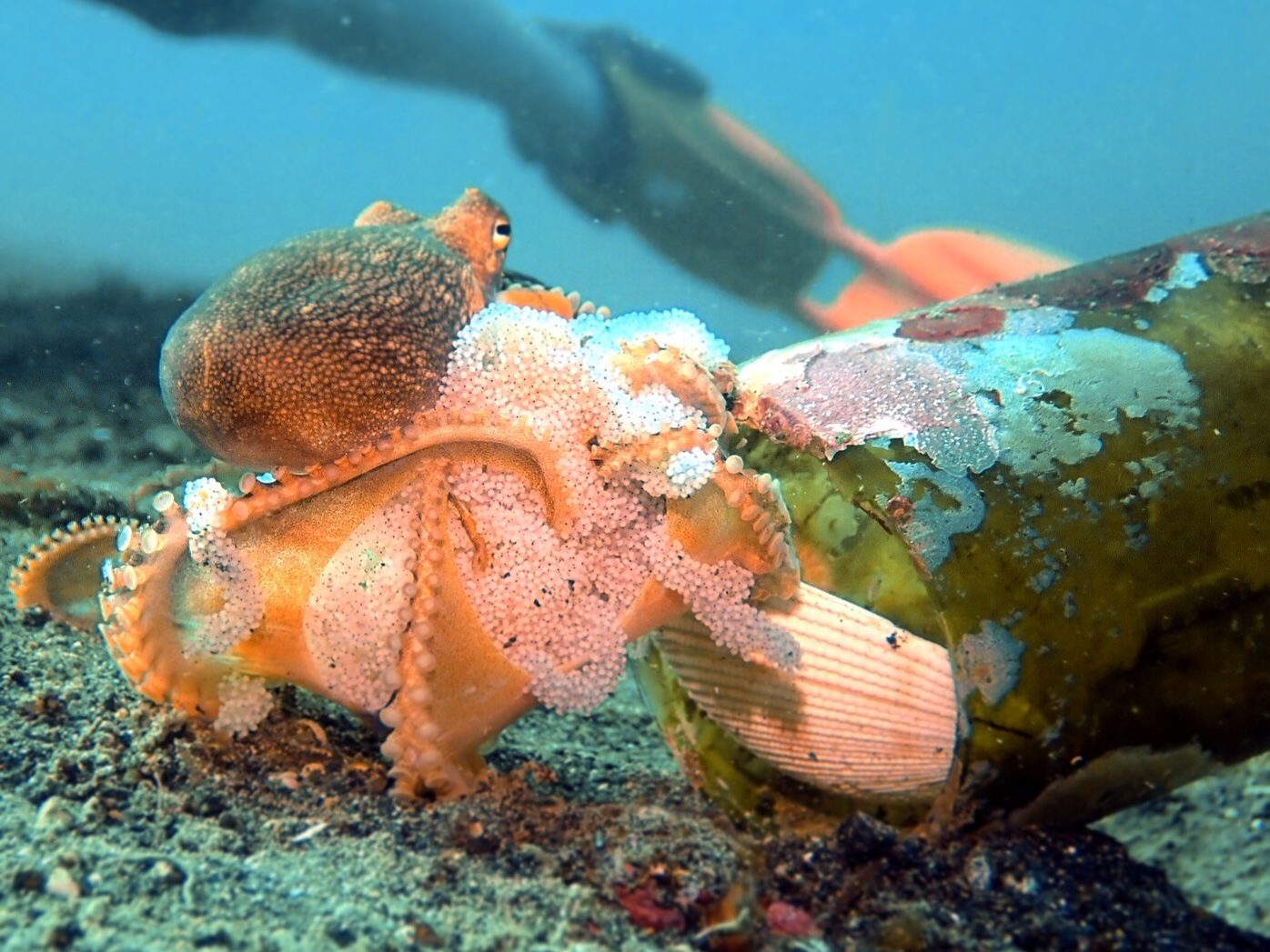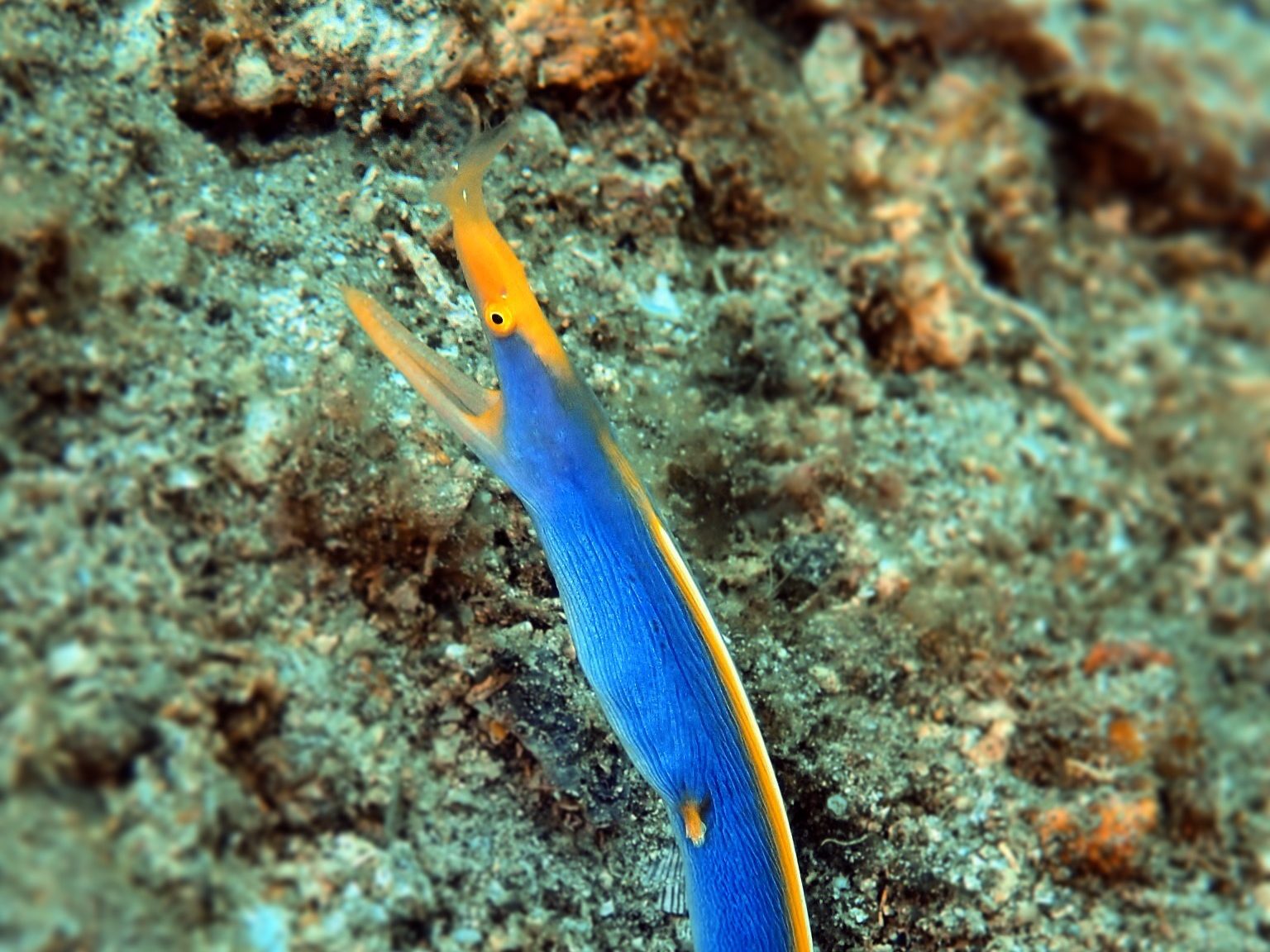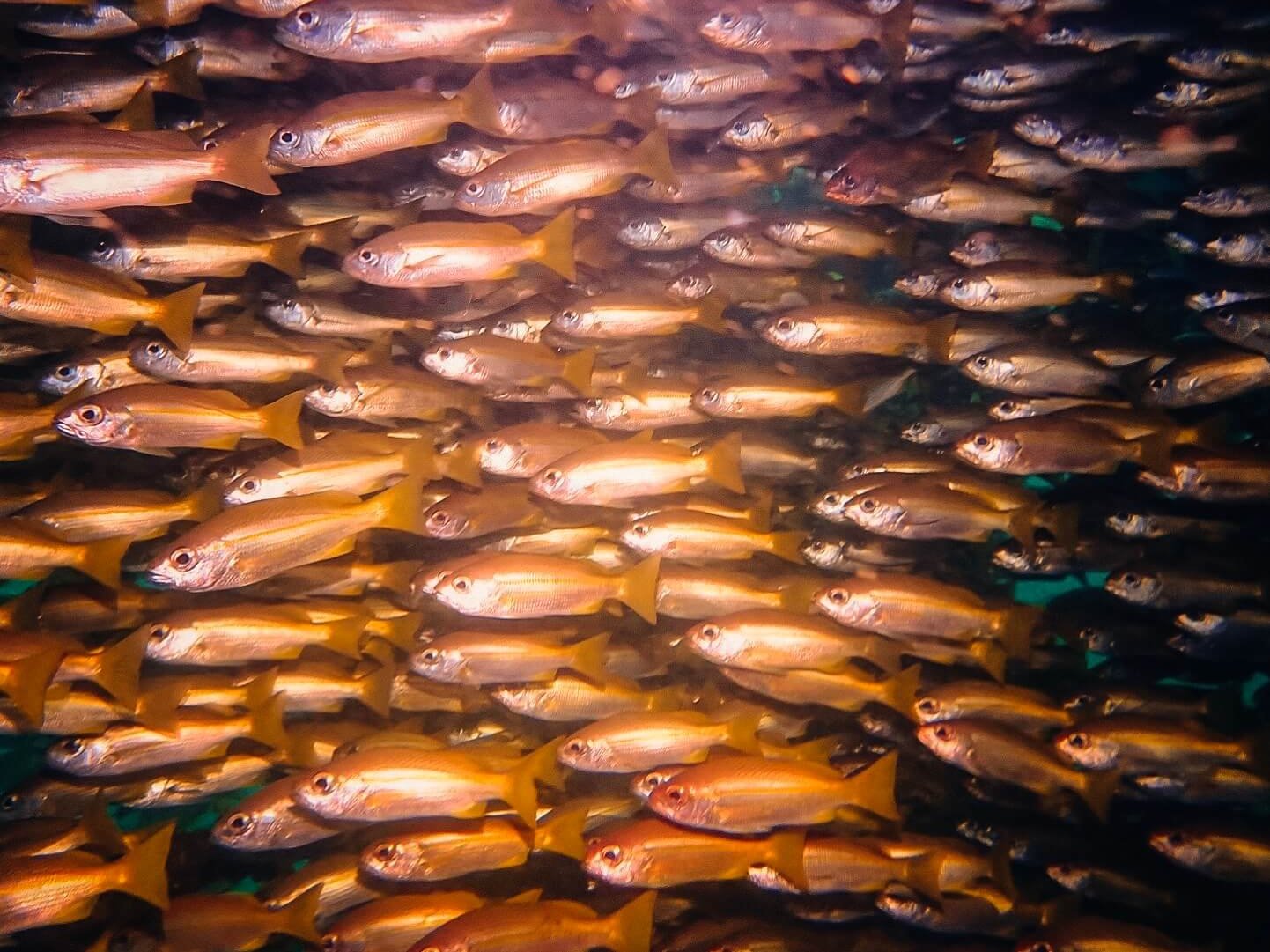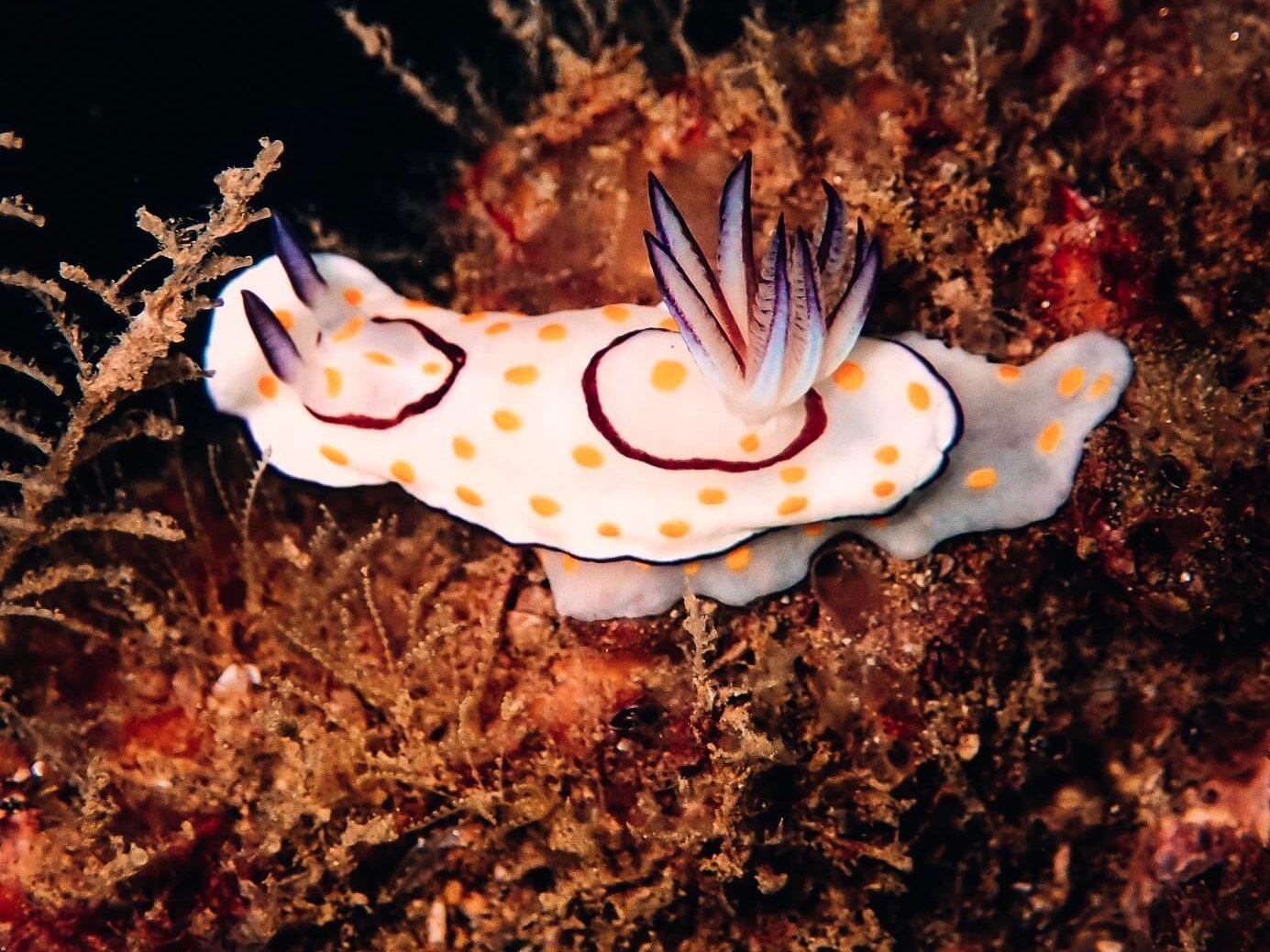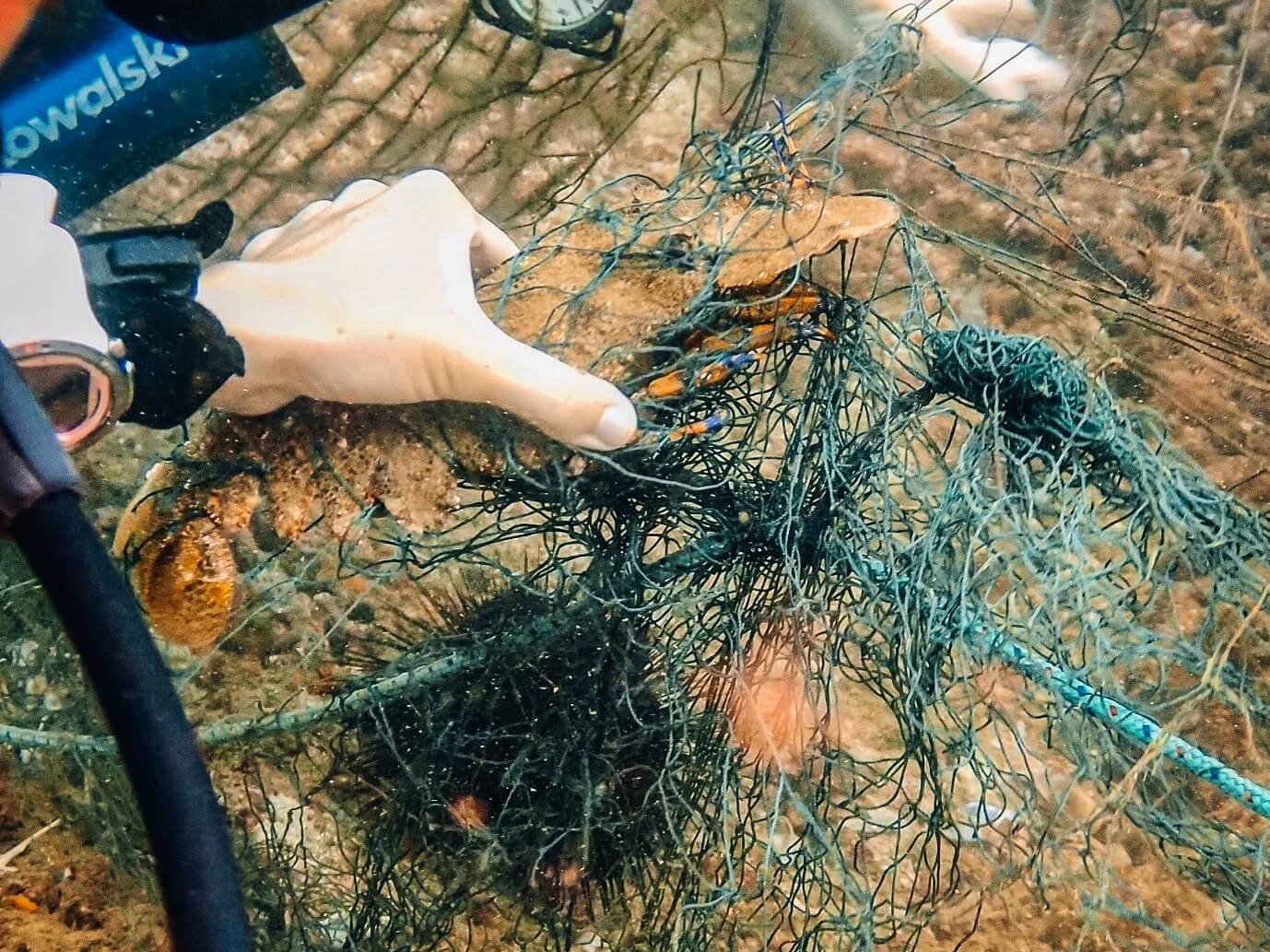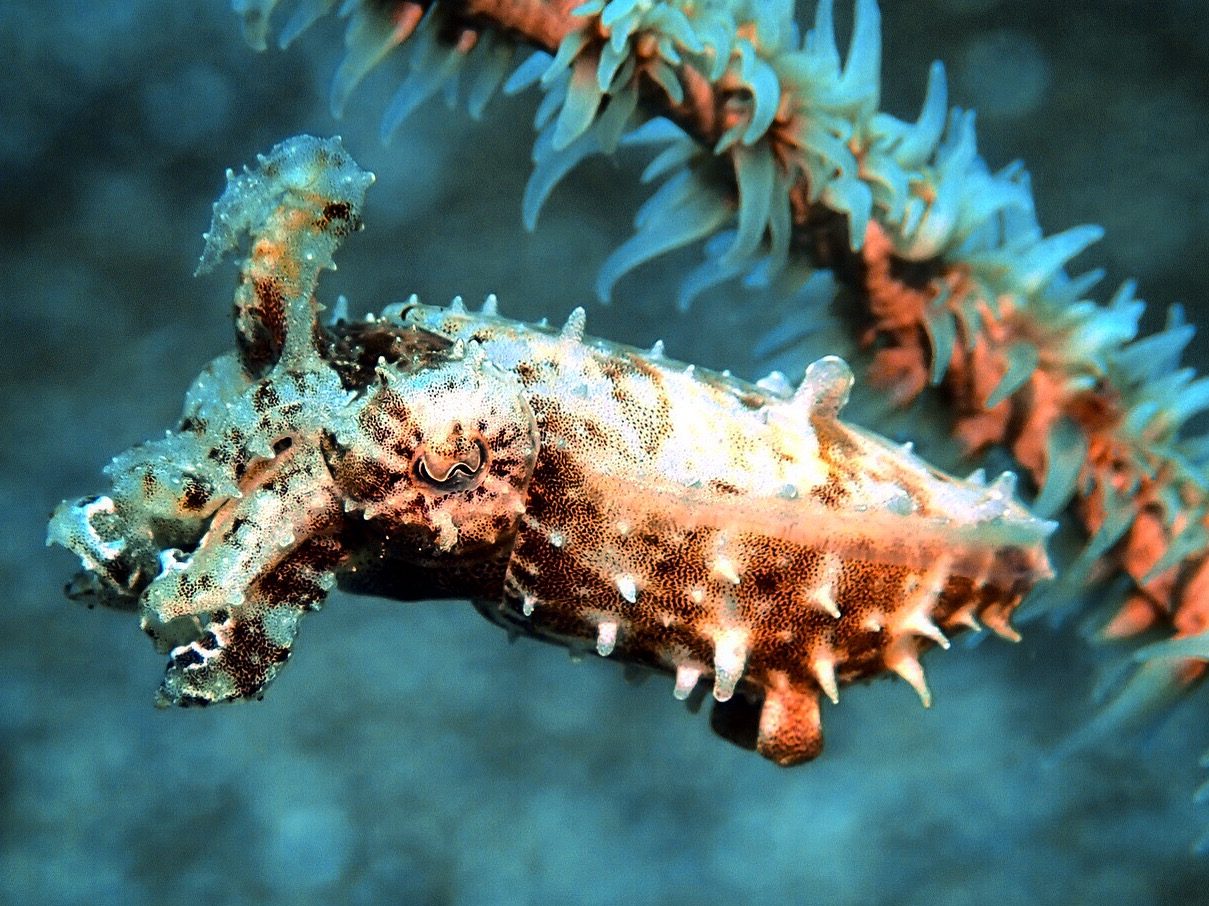
The Mysterious Curlycue Octopus, and All the Other Cephalopods We Met Along the Way
The number one thing I really wanted to see in Lembeh, Indonesia was a mimic octopus. Normally I don’t dive with expectations, I just enjoy whatever show Mother Nature feels like putting on that day. As dive guides, Fletch and I have really grown to loath the question, ‘What are we going to see today?’ It’s a silly question. You can never guarantee anything but water. And the list of things you might see could fill up the pages of a bible. We were told that the way to dive Lembeh though was to give our dive guides a wish list of things we wanted to see, and so the search for a mimic octopus began.
Mimics, as their names suggest, can imitate as many as fifteen different critters in the ocean. In order not to get eaten, they pretend to look like lionfish, flounders, sea snakes, you name it. They’re pretty spectacular.
When you find something cool like a mimic, you have to be able to relate that to your buddies. Not all dive signals are universal; some of the marine life signals tend to vary from place to place, from diver to diver. As long as you are getting the point across though, that’s all that really matters. Fletch likes to use the one-handed method of bringing all of your fingertips together, then curling them in towards the palm of your hand repeatedly. He does this for all cephalopods. So as you can imagine, each time he signaled to me that he had found what might have been an octopus, a cuttlefish, or a squid, my heart raced and I rushed over hoping to see my mimic. There really should have been a specific sign for mimic so as not to get my dreams up and dashed so many times.
The first time this happened I rushed over to find a little guy perfectly blended in with the sand, speckled in differing shades of volcanic black and all. As he made his way across the sandy bottom, he intermittently swapped between a flat, oblong shape, which I’m guessing was supposed to make him look like a flounder, and all eights spread out in every direction, which I assume was his attempt at looking as intimidating as possible, a herculean task for his small size (about the size of my hand).
| White-V octopus mimicking a flounder. |
| An actual flounder, for reference. |
There is relatively little written about the white-v octopus. I was hoping to do a little research and wow you with my impressive knowledge of this fellow who I never even knew existed, but it seems as though the rest of the internet doesn’t know he exists either, aside from a few stock photos. (By the way, these are not the stock photos, but my own.)
| White-V octopus eyeing us suspiciously before he disappears into the sand. |
| White-V octopus simultaneously being intimidating and camouflaged. |
The next cephalopod we found was one that Tanja and Stephan had never seen before. Fletch and I were staring mesmerized at a tiger mantis shrimp when Stefan came over, eyes wide with delight, and started tugging Fletch away like a kid trying to drag his parents towards the rides at the amusement park. There in the sand was a vibrant purple cuttlefish, aptly named the flamboyant cuttlefish, and no bigger than the first two joints on my index finger. Despite wanting to squee with delight and stare like a moth at a flame, I tried to let Tanja and Stefan get first dibs with the camera. Luckily there was a second little boop not even ten feet away.
| Look! A Cuttlefish! |
The flamboyant cuttlefish looks like the pet every kid would want in place of a pony if we lived in some alien universe. They flash the most dazzling display of purples and yellows with little white clouds drifting past, as if their entire body was just one misshapen plasma display screen with a face full of tentacles. Normally they camouflage to blend in with the sand. This I have never seen, because as soon as they feel threatened, they try to startle their predators with the hypnotizing color works. And I guarantee when you are the size of a fingertip, a group of divers kicking up all the sand you’re crawling around on is plenty threatening. (We weren’t actually kicking up the sand, but you see what I’m getting at here.)
| Flamboyant Cuttlefish (Metasepia pfefferi). Now imagine all of those colors in motion. |
To watch a flamboyant cuttlefish crawl around in the sand is like watching a tiny little purple rhinoceros move about. They crawl around on two arms in the front, and a portion of their mantle which protrudes to look like legs in the back. Apparently their cuttlebone to size ratio doesn’t support much buoyancy, and so it is thought that they prefer to scuttle about on the bottom. Only a few species of cuttlefish have developed this trick.
The next time Fletch made the octopus sign (or possibly a squid, or possibly a cuttlefish), it was to point out another cuttlefish even smaller than the flamboyant, and much less colorful. I am going to take a guess that this was a crinoid cuttlefish due to its size and pointy skin flaps. These little guys grow to be all of 4 cm.
| Crinoid Cuttlefish (Sepia sp.2) |
We watched in awe for a while as the little guy hovered, seemingly motionless, hunting his next meal. He would stretch out his tongue tentacles, slowly and cautiously, then zap them back in to feed himself faster than the blink of an eye.
We also found a more common, broadclub cuttlefish, which grows to be a whopping 20 inches. This one was maybe half that size, and quite friendly and interactive. I followed him around for a while, and he never seemed to mind. He didn’t speed up to jet away anyway, but rather just sort of meandered about like a bumblebee.
| Broadclub Cuttlefish (Sepia latimanus), about 10 inches. |
By the final time Fletch made the ambiguous cephalopod sign, I had mostly given up on spotting a mimic, and was almost surprised to see any octopus at all. The little octopus we saw only gave us a brief show as she dashed from her sandy hiding place to a nook in a rock. That brief show was both baffling and mysterious. The little octopus had all of her tentacles curled and displayed in every direction like a Balinese dancer. She looked more like an intricate, delicate glass sculpture than a living, breathing thing, capable of forming herself into almost any shape.
| A beautifully intricate display by an unknown octopus. (Abdopus sp.) |
I’ve spent hours pouring over the internet but cannot figure out what species she is, or why she turns all of her arms into curly fries when encountered. All I can find is that she belongs to the genus Abdopus. I would love to know more though. If you have any intel, drop a comment or send me a message.
| Bundled up into a ball, yet each individual arm is still wound into a neat spiral. |
| Here she makes two of her arms look like the horns of a screw horn goat (yes, that’s a thing). |
| What are you and what games are you trying to play, little octopus? |
Unfortunately we never did get to see the mimic octopus. In its place, I was introduced to some pretty awesome cephalopods I never knew existed though. The search will just have to continue. One day I will see a mimic!


